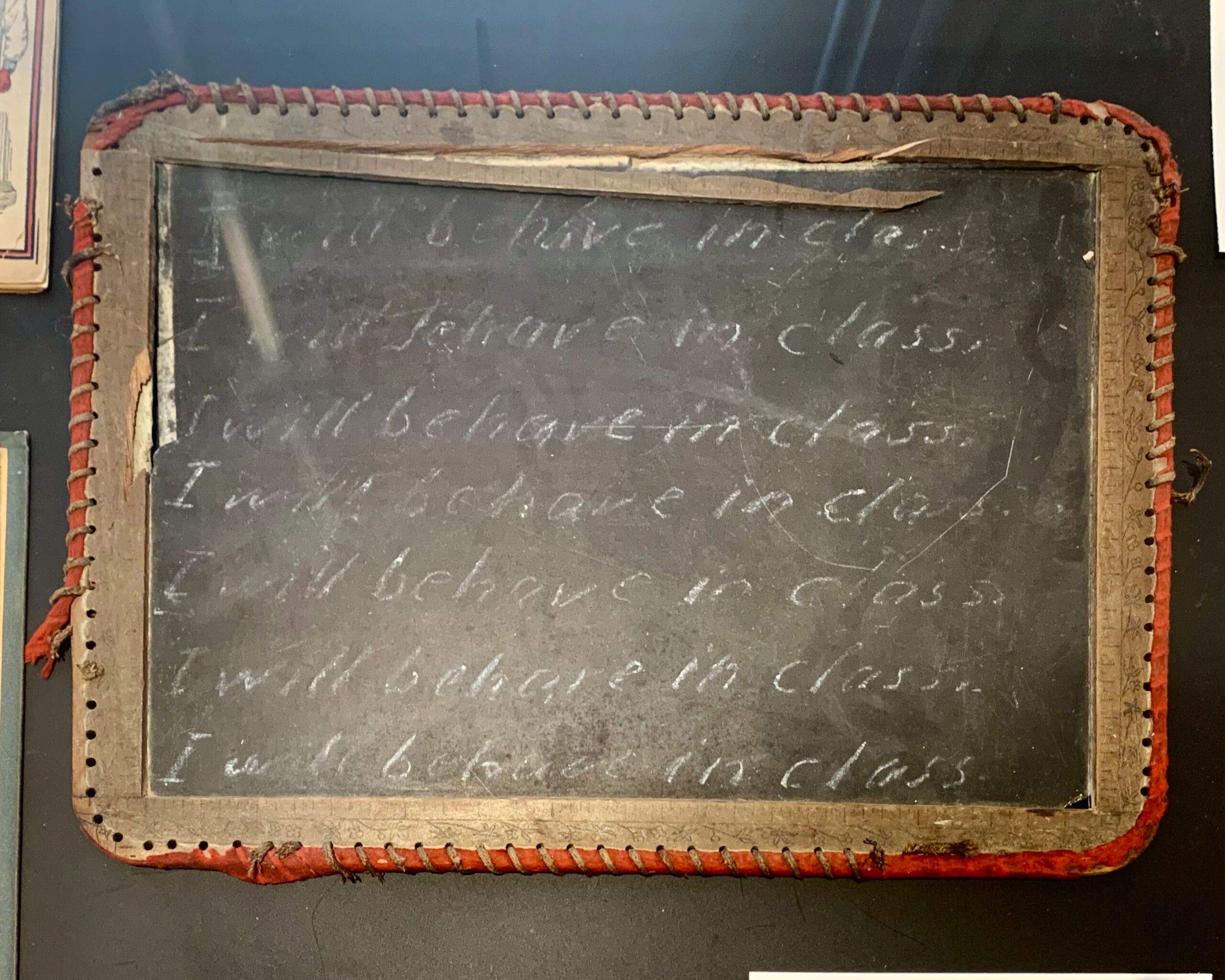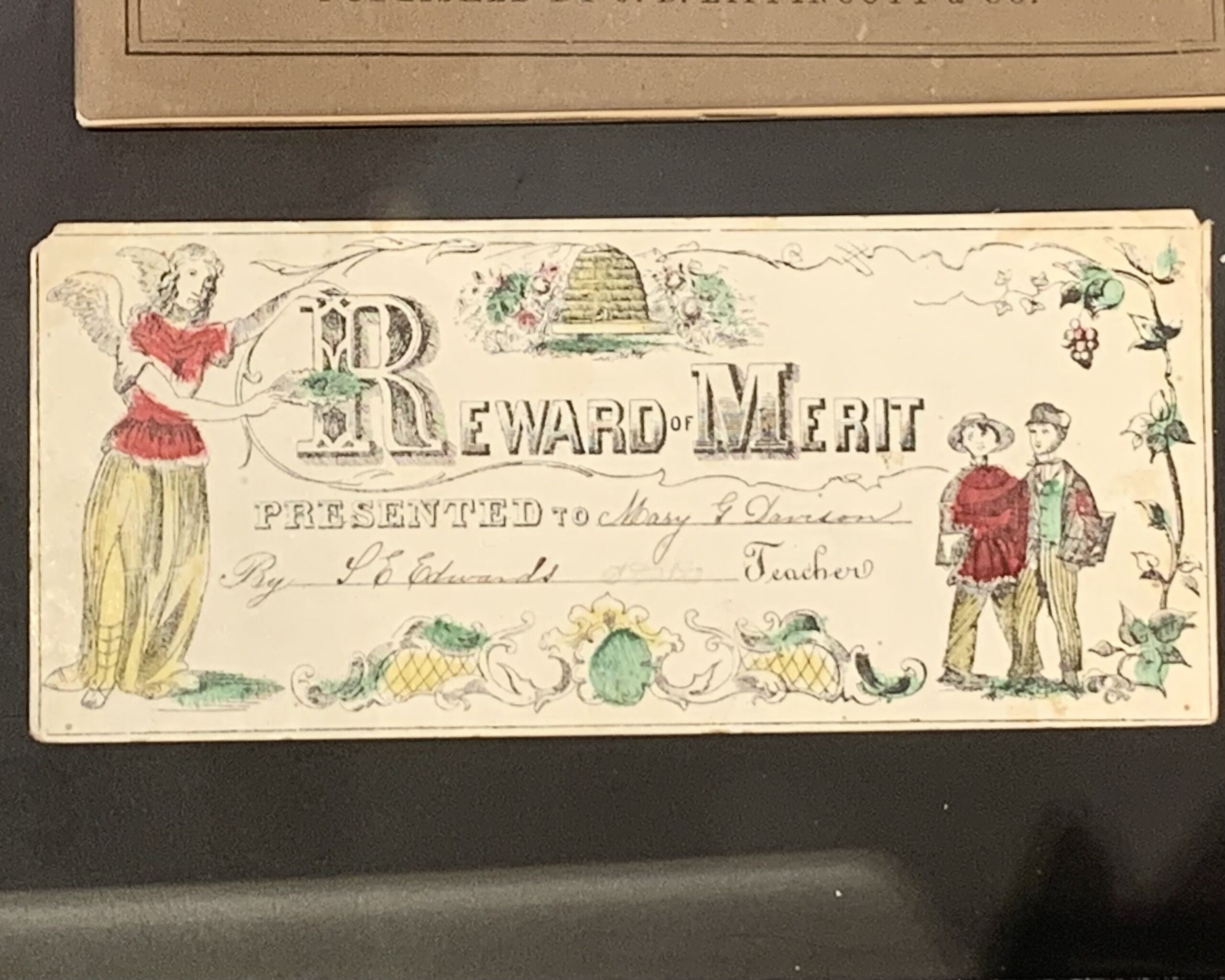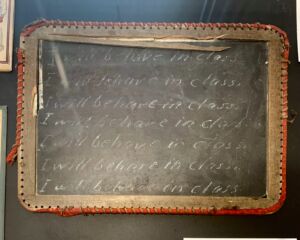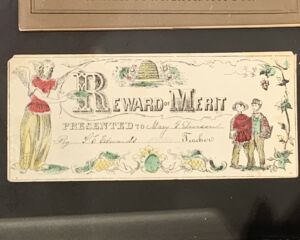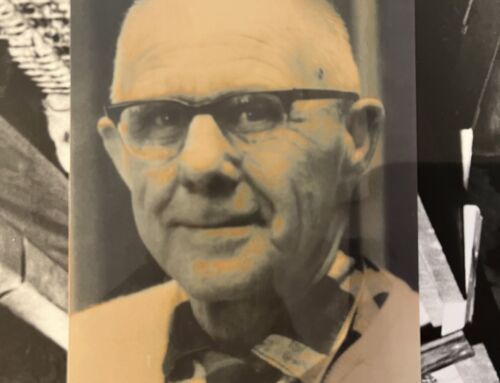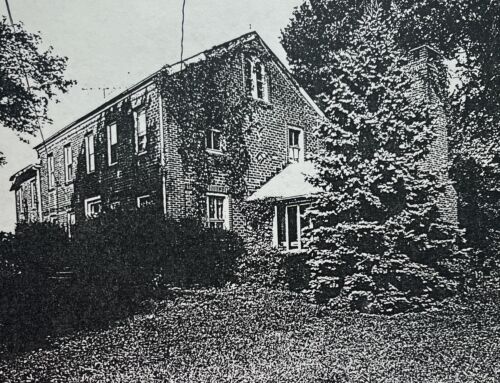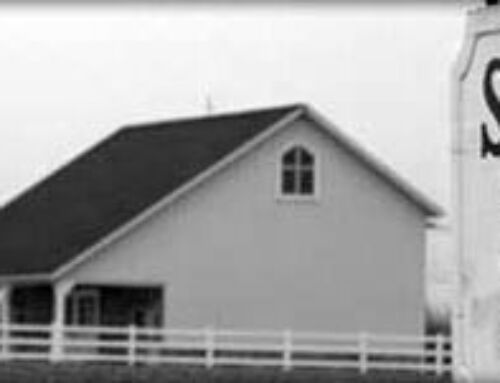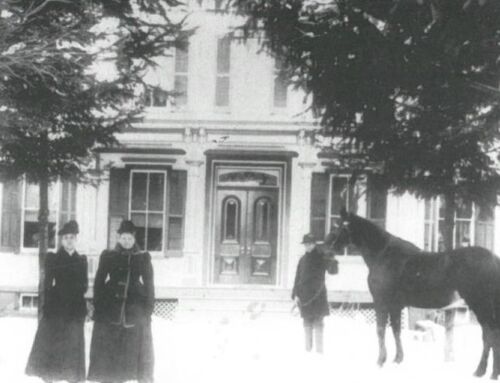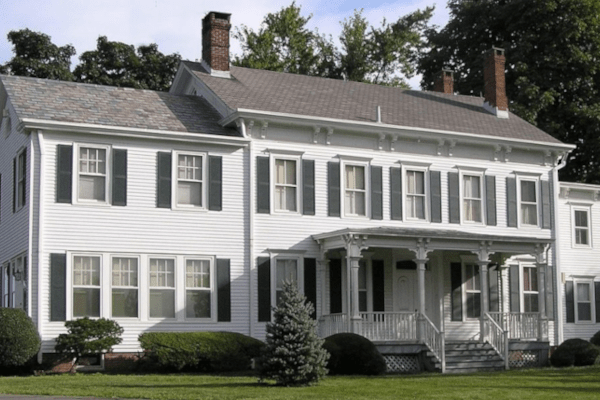Materials used in the classroom certainly have changed over the years. The main school supplies children had in the 18th and early 19th centuries were small chalkboards called slates which were used to practice math problems, writing and spelling. In every subject, the expectation was that students would memorize and recite the lessons and then take slates home to do their homework. The slate in this picture belonged to a student in Plainsboro.
After the American Civil War, the cost of paper decreased and pencils were becoming more common. Slates were used less frequently as students began writing on paper. With the invention of the personal notebook, students now had a space where they could then ¨train their mind to think.” They were able to keep a more permanent written record of their school work and of what had been taught by the teacher. The lined notebook pictured below was used by Mary G. Davison of Plainsboro. Inside, she wrote poems and songs. She was likely the daughter or granddaughter of George Davison, who owned a large farm in Plainsboro and was heavily involved in the Middlesex County Board of Agriculture as well as in the early development of Plainsboro.
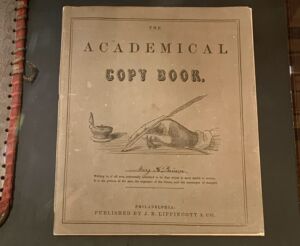
When the above Academic Copy Book was donated to the museum, a merit award was found inside. The award pictured below was given to Mary G. Davison by her teacher, P.E. Edwards. In the 19th century, school certificates of merit were sometimes hand-produced, while later in the century, they were more commonly pre-printed featuring colorful chromolithography images of flowers and animals or small humorous scenes. Teachers in the 20th century began to favor positive reinforcement as a form of motivation, utilizing these merit awards for those who were obedient, punctual, deferential, and task-oriented.
Learn more about the early history of Plainsboro schools by visiting our temporary exhibit – open until May 7th! Visiting hours are 1pm-4pm on Saturdays and Sundays, and by appointment on Mondays and Tuesdays.
